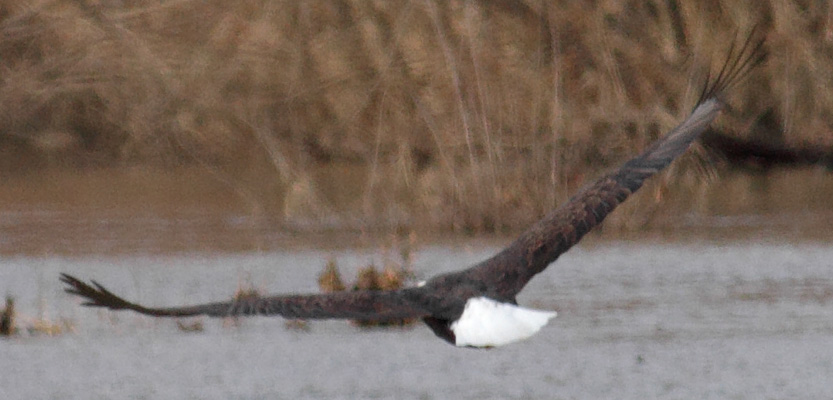
Bald Eagle
There were reports of Cackling Geese, Greater White-fronted Geese, and a Tundra Swan mixed in with a large flock of Canada Geese in a pond along route 340 between Shalom and Mt. Vernon roads in Stuart's Draft, Virginia. Walt Childs and I decided to do some birding in Swoope, Virginia, and then make a stop at that pond on the way home.
We saw a good number of smaller birds on the trip, but it was the raptors and waterfowl that were the highlights of the trip. In the Swoope area we saw about 10 American Kestrels that were perched on a post or wire, and then kited in the fairly strong winds. We saw a Red-shouldered Hawk, a Northern Harrier, and quite a few Red-tailed Hawks. One of the two resident Bald Eagles flew from a log in Smith Lake as we approached.

Bald Eagle

Red-shouldered Hawk
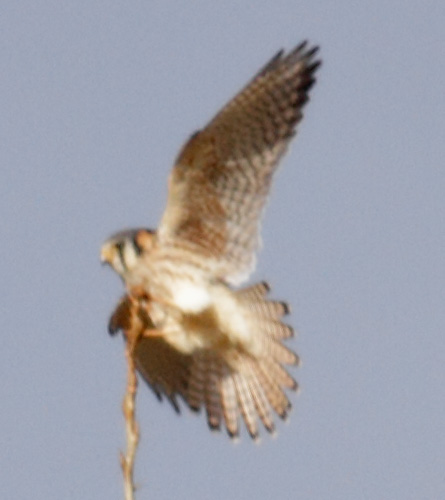
Female American Kestrel

Female American Kestrel

Female American Kestrel
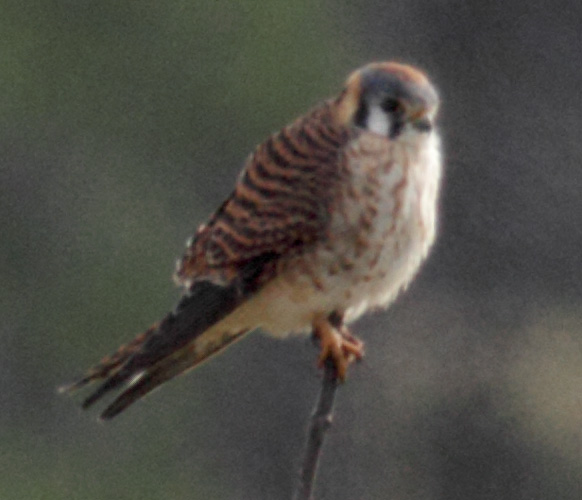
Female American Kestrel
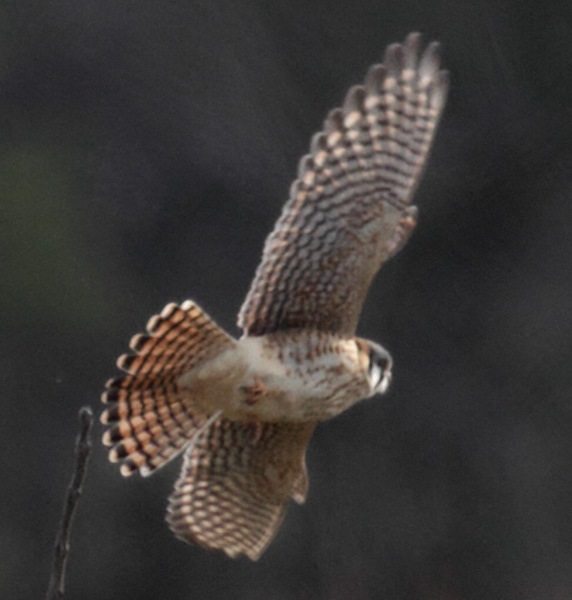
Female American Kestrel
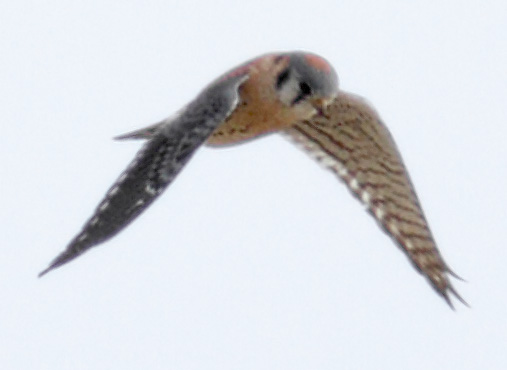
Male American Kestrel
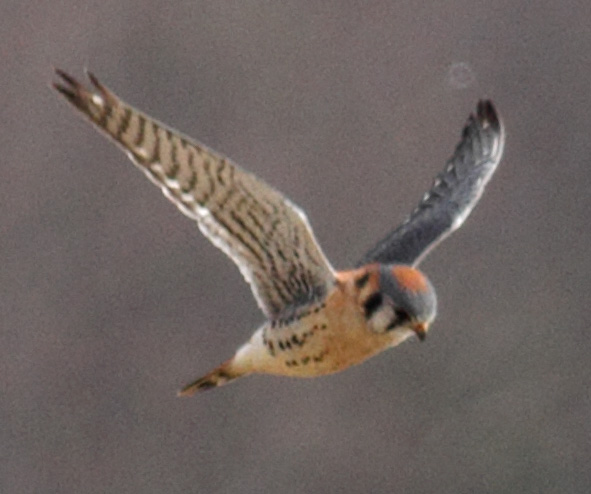
Male American Kestrel
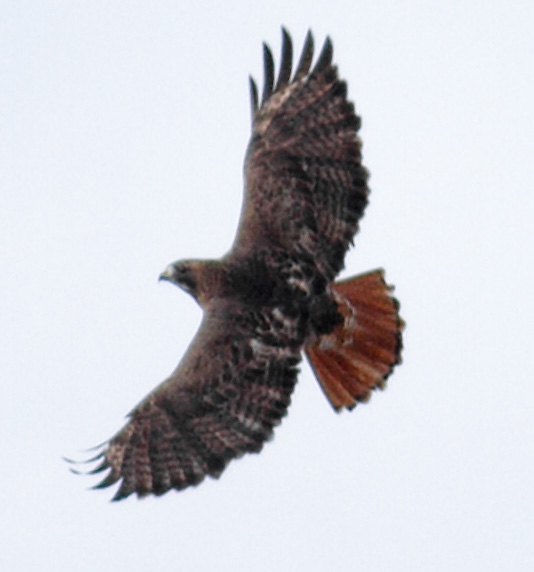
Red-tailed Hawk
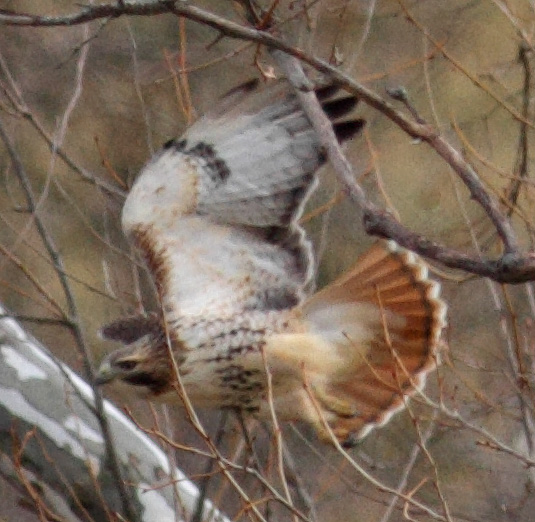
Red-tailed Hawk

Red-tailed Hawk
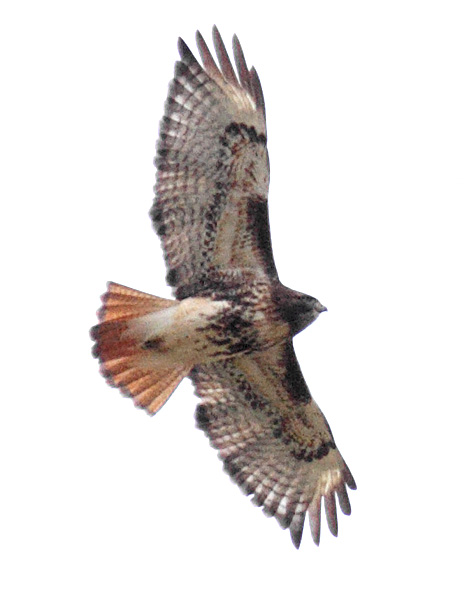
Red-tailed Hawk
Twice we saw Red-tailed Hawks doing aerial battle with some crows. It always neat to watch how the hawk twists its body to look for the crows and fight.
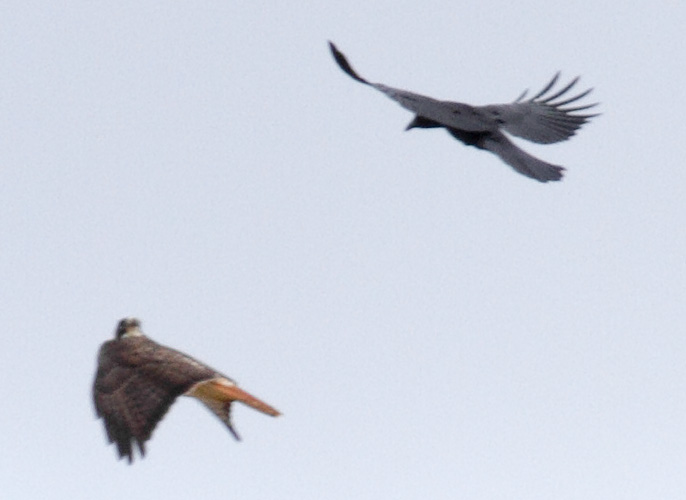
Red-tailed Hawk and Crow
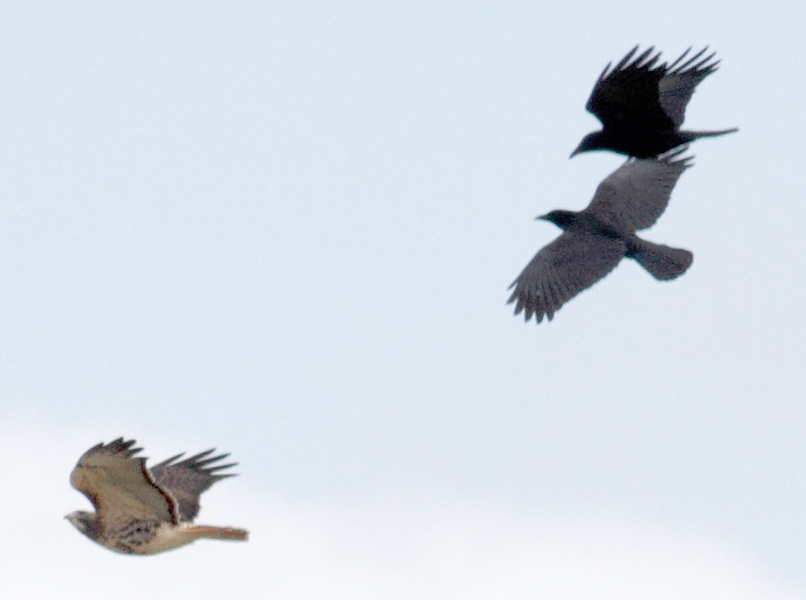
Red-tailed Hawk and Crows
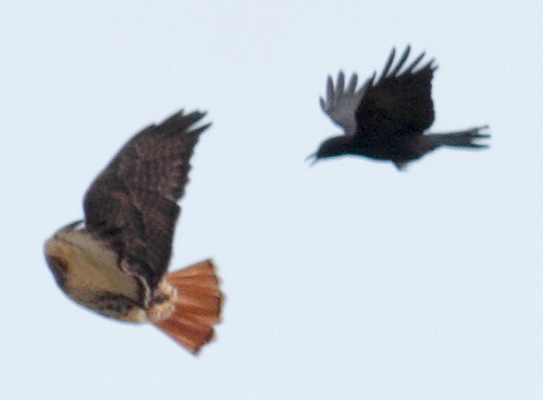
Red-tailed Hawk and Crow
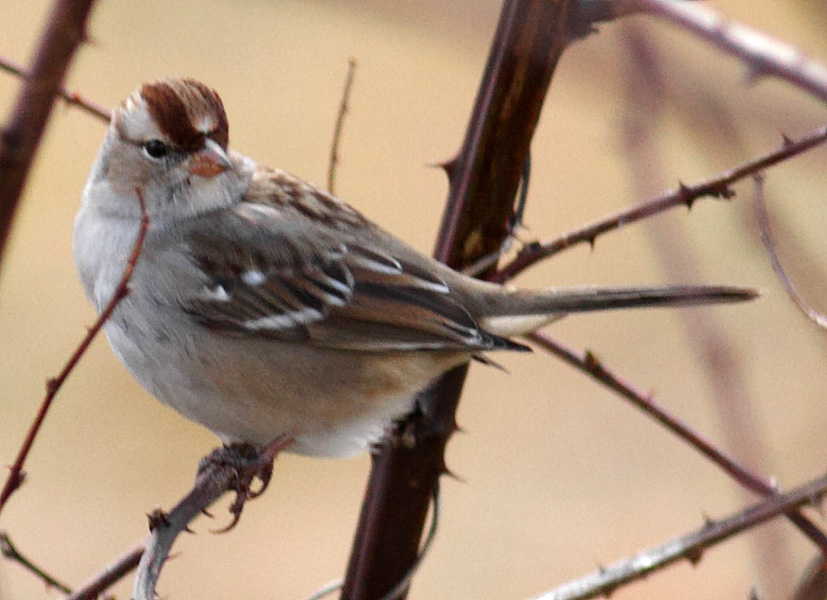
Immature White-crowned Sparrow starting to get its adult plumage
There were lots of Canada Geese, Gadwalls, and Mallards in Smith Lake. There also were a few American Black Ducks and at least four American Black Duck x Mallard hybrids.
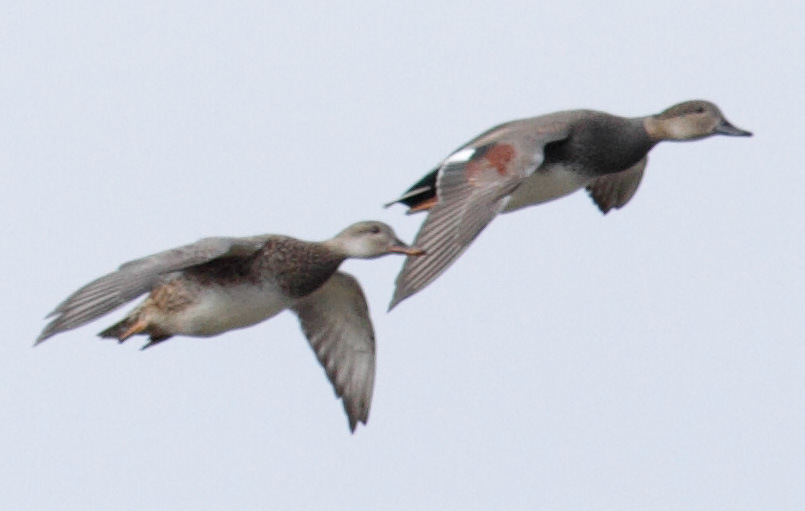
Male and female Gadwalls

Male Gadwall
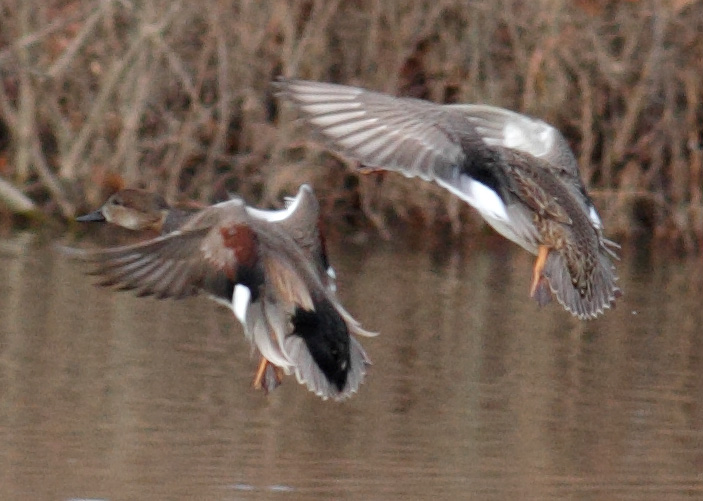
Male and female Gadwalls

Male and female Gadwalls
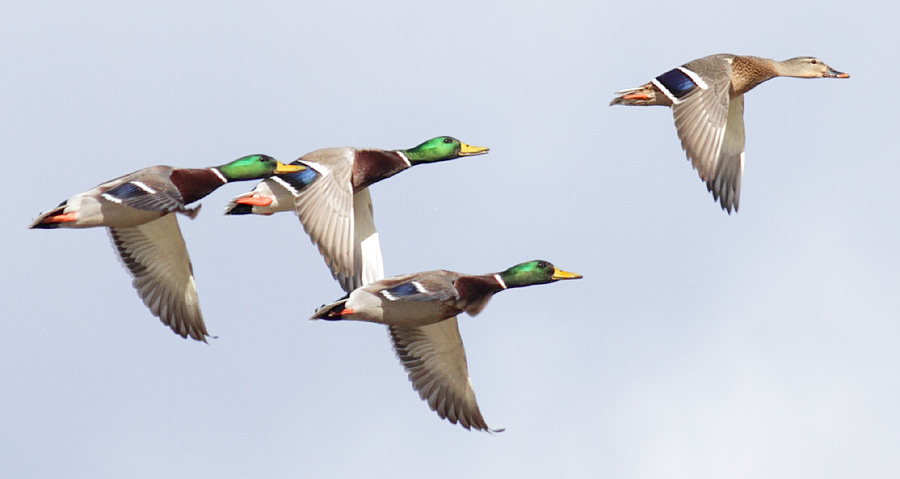
Male and female Mallards
Note that the Mallards have blue wing patches with white bars on both sides of each patch; males have yellow bills, and their bellies are white. American Black Ducks have the blue wing patches, but without the white bars, dark olive bills, and dark bellies. American Black Duck x Mallard hybrids have characteristics of both species.
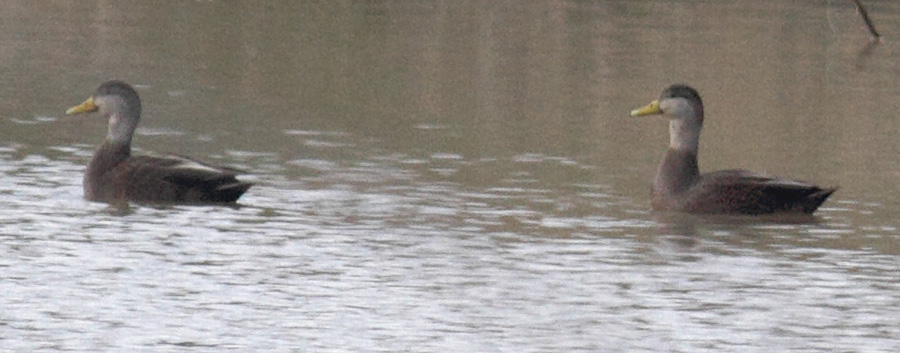
American Black Duck x Mallard hybrids - note the yellowish bills, dark bellies, and some white on the wings
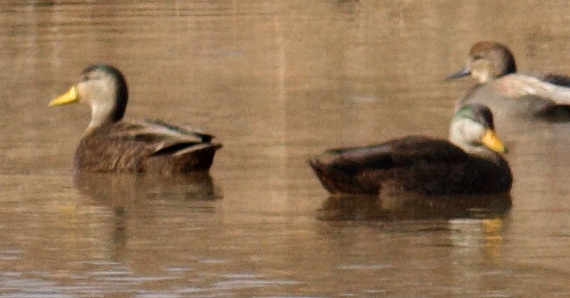
American Black Duck x Mallard hybrids - note the yellowish bills and some green coloring on their heads
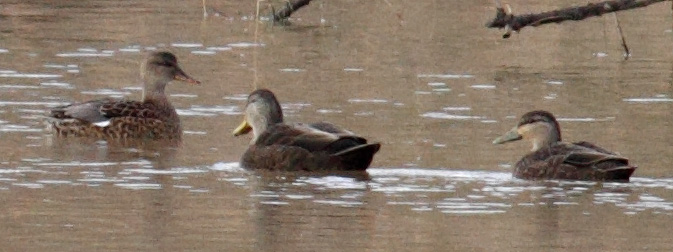
Mallard female (left); American Black Duck x Mallard hybrid (middle); American Black Duck (right)
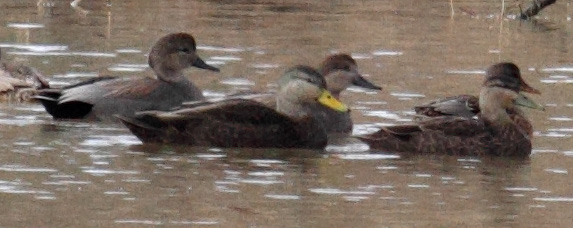
American Black Duck x Mallard hybrid (left); American Black Duck (right); Gadwalls (behind)
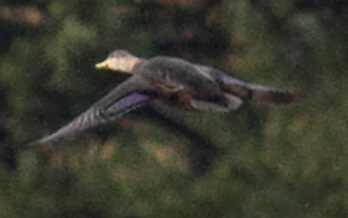
American Black Duck - note lack of white wing bars

Mallards; American Black Duck x Mallard hybrid - note faint white wing bars
We also looked for Cackling Geese mixed in with the Canada Geese at Smith Lake. Prior to 2004, Canada Geese sub-species were lumped together as one species - the large Common Canada Goose; the smaller bodied and necked, stubby-billed, Richardson's Canada Goose; and the Lesser Canada Goose that fell somewhere between the Common and Richardson's sub-species. In 2004, the Richardson's was listed as a separate species - Cackling, and presumably the Lesser could fall into either species based upon some, but unclear to me, division. To complicate matters, immature Canada Geese that have not yet grown to full size makes identification even more difficult.
When the Canada Geese took off from the lake, I tried to photograph as many groups of birds as possible, as the neck of the goose is fully extended in flight, and supposedly, it is easier to distinguish between Cackling and Canada Geese while they are in flight. In the photo below, the large goose in front is clearly a Canada; the significantly smaller goose in the middle has a shorter neck and a small, stubby bill, and is probably a Cackling; the goose behind the Cackling is somewhat larger, but has a small, stubby bill, and is probably a Lesser sub-species, and may be a Cackling; the goose at the bottom right is almost the same size as a Cackling, and even though its neck looks to be a tad longer, is probably a Cackling as well.
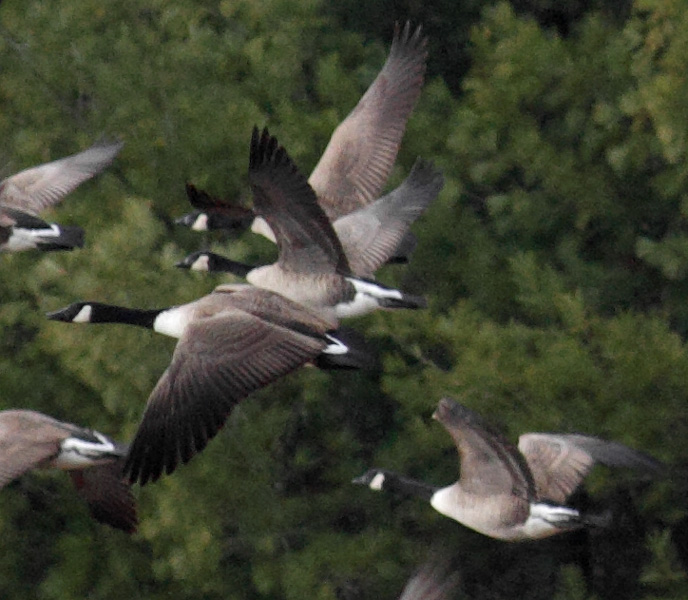
Cackling and Canada Geese
We added 5 more species when we drove around the Stuart's Draft area, bringing our trip total to 37 species. At the pond along route 340, we observed the large flock of Canada Geese and saw a good number of smaller geese. We were 100+ yards away from the pond, and some of the geese were resting up against the nearest bank making them barely visible, but I did capture the Tundra Swan with its head tucked in on one of the photos.

Tundra Swan and Canada Geese
All of the small geese that we saw had pointed instead of stubby bills, so it is difficult for me to determine if they were Cackling or immature Canada Geese.

Smaller Cackling(?) Geese in front; Canada Geese behind
Today's list:
Cackling Goose Tundra Swan American Black Duck Gadwall Mallard Black Vulture Turkey Vulture Bald Eagle Northern Harrier Red-tailed Hawk American Kestrel Rock Pigeon Mourning Dove Red-headed Woodpecker Red-bellied Woodpecker Downy Woodpecker Northern Flicker Blue Jay Common Raven Carolina Chickadee Tufted Titmouse Carolina Wren Eastern Bluebird Northern Mockingbird European Starling Song Sparrow White-crowned Sparrow Northern Cardinal Red-winged Blackbird Eastern Meadowlark House Finch American Goldfinch House Sparrow |